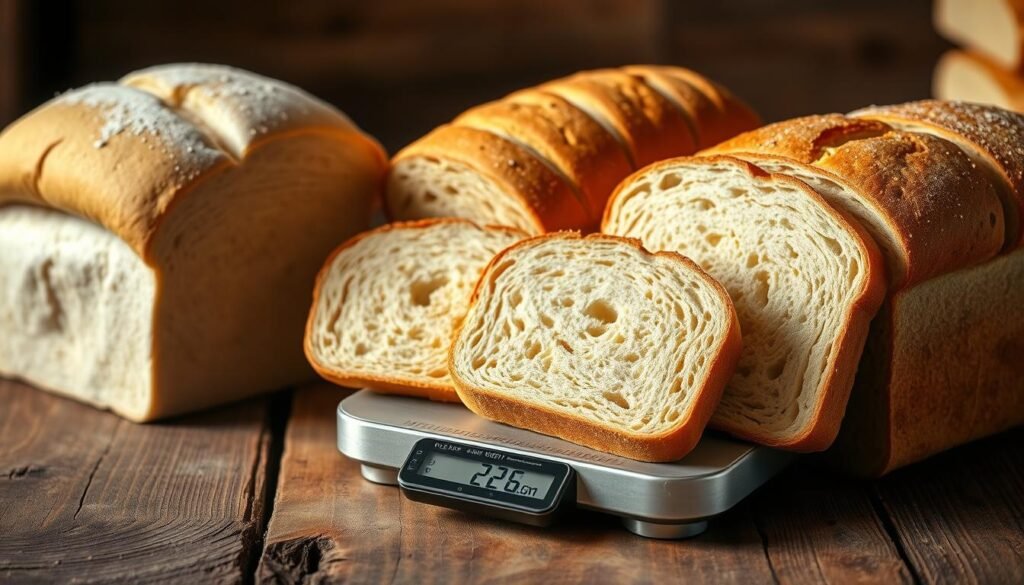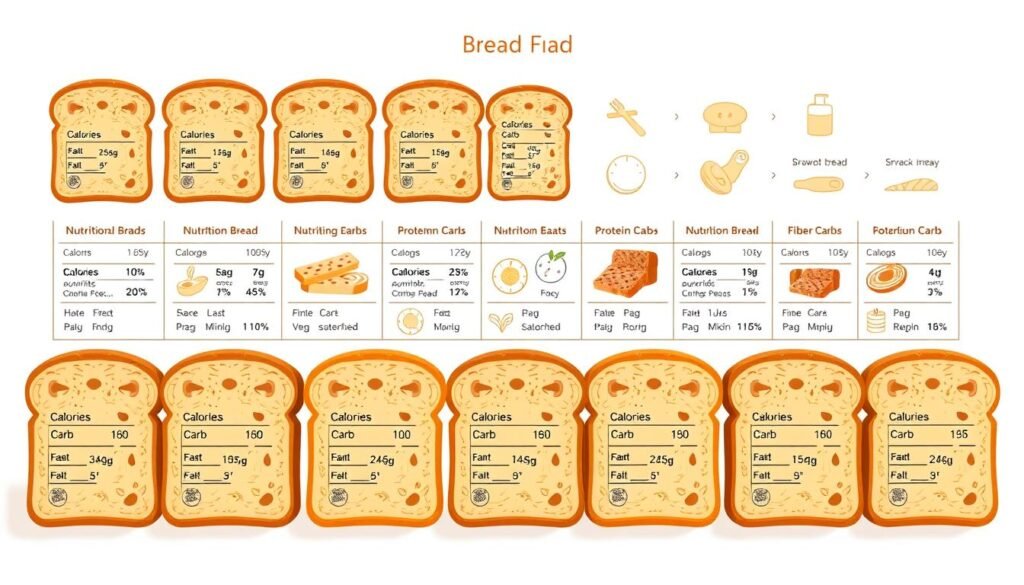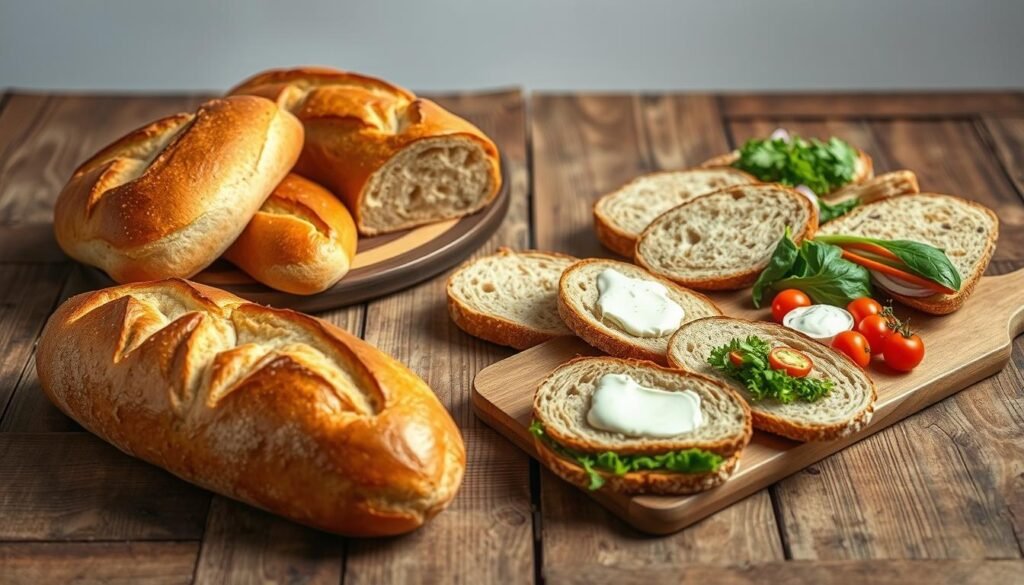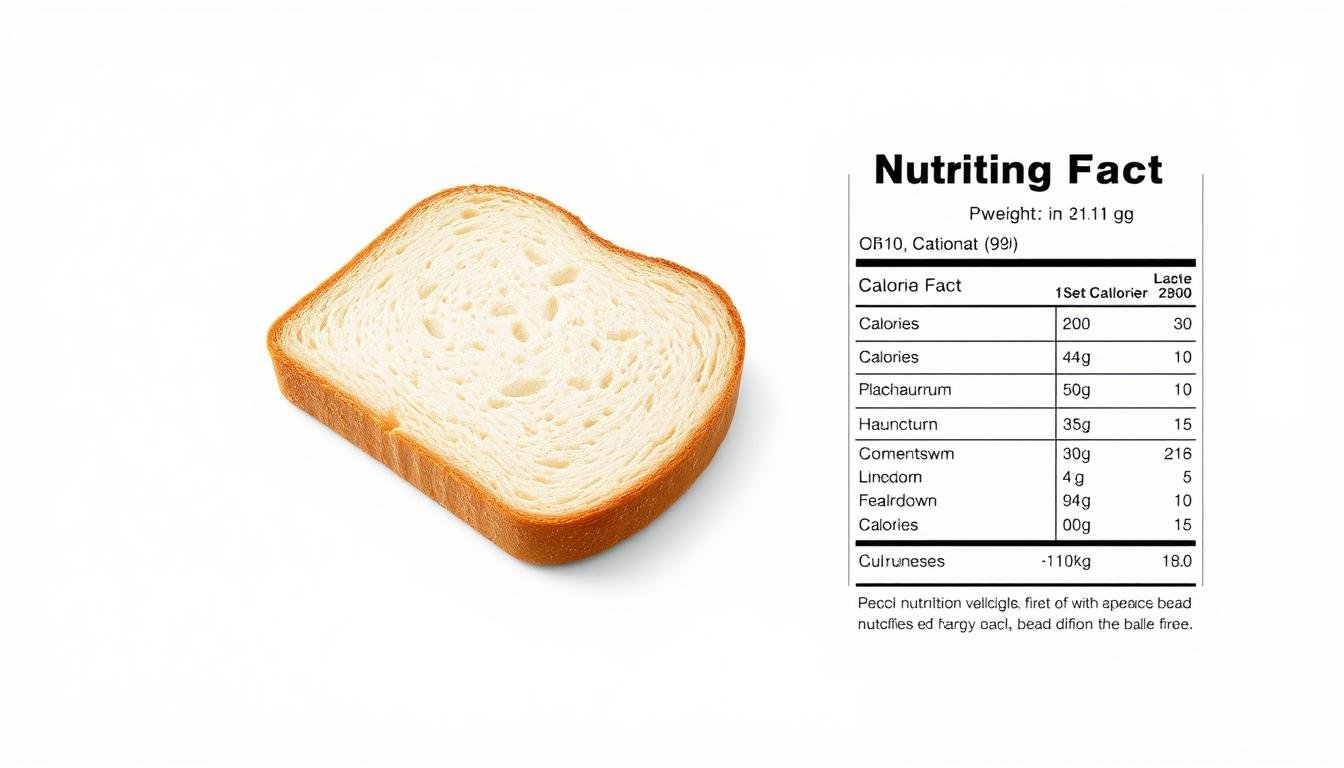Ever wondered why your sandwich doesn’t always match your calorie tracker’s expectations? The answer might lie in something as simple as understanding bread weight. Whether you’re meal prepping, counting macros, or just curious, knowing the exact mass of your daily slice matters more than you think.
A typical piece of sandwich bread weighs around 35 grams, but this varies by type and brand. For context, a standard loaf contains roughly 22-24 slices and clocks in at about 800 grams. This directly impacts portion control, calorie intake, and how you balance nutrients like fiber and protein.
Not all bread is created equal. White, whole wheat, and multigrain options differ in nutritional breakdown, affecting everything from energy levels to digestion. For example, whole-grain varieties often pack more fiber, while seeded loaves might offer extra protein.
This guide dives into practical details—like how weight connects to carbs, sodium, and vitamins—so you can make informed choices. Let’s simplify the numbers and turn your next grocery trip into a win for your health goals.
Key Takeaways
- Standard bread slices average 35 grams, but weights vary by type and brand.
- A full loaf typically contains 22-24 slices and weighs approximately 800 grams.
- Nutritional values differ significantly between white, wheat, and specialty breads.
- Tracking portion sizes helps manage calories, carbs, and fiber intake effectively.
- Whole-grain options often provide more fiber and nutrients compared to refined varieties.
Understanding Bread Weight: How many grams are in a slice of bread
Why do nutrition labels sometimes feel disconnected from your kitchen scale? The answer often lies in the weight variations between different loaves. Whether you’re meal prepping or tracking macros, precise measurements matter—and they start with understanding what’s on your cutting board.

Standard Slice Specifications and Measurements
Most pre-cut sandwich slices weigh roughly 35 grams. Bakery standards typically require a thickness of 1.2-1.4 cm per piece. A standard loaf contains about 22-24 slices, totaling around 800 grams. Here’s how different types compare:
| Bread Type | Avg Slice Weight | Dry Matter (Half Loaf) |
|---|---|---|
| White | 34g | 240g |
| Wheat | 37g | 255g |
| Multigrain | 40g | 265g |
Factors Influencing Bread Slice Weight
Moisture plays a big role—dough with higher water content yields lighter slices after baking. Whole-grain and seeded varieties often weigh more due to dense ingredients. Even ounce measurements can shift slightly between brands.
For those counting calories, these differences add up. Two slices of wheat bread might equal three white slices in total grams. Always check labels or weigh portions to stay accurate—your meal plan will thank you!
Nutritional Profile and Caloric Breakdown of Bread
Choosing the right bread isn’t just about taste—it’s a science. Every variety offers distinct nutritional benefits that directly impact energy, digestion, and long-term health. Let’s crack the code on what’s really inside your loaf.

Calories, Carbs, and Fiber Analysis
A typical white slice packs 75-80 calories, while whole wheat averages 81 calories. But the real story lies in carb and fiber content. One slice of white bread contains 15g total carbs (14g net carbs), compared to whole grain’s 12g total carbs with 3g dietary fiber.
Fiber slows digestion, keeping you fuller longer. Seeded multigrain options often deliver 4-5g per serving—nearly 20% of daily needs. This makes them ideal for maintaining steady energy levels.
Comparing White, Wheat, and Whole Grain Options
| Type | Calories | Carbs | Fiber |
|---|---|---|---|
| White | 77 | 15g | 0.9g |
| Wheat | 81 | 13g | 2g |
| Whole Grain | 85 | 12g | 3g |
Whole grain’s higher fiber content supports gut health, while refined white foods spike blood sugar faster. Always check labels—some “wheat” breads use caramel coloring instead of whole grains.
Interpreting the Detailed Macronutrient Data
Bread’s macronutrient split matters for body fuel. A standard slice provides:
- 65% carbs (energy source)
- 15% protein (muscle repair)
- 20% fats (nutrient absorption)
This balance helps account for 5-10% of daily nutrient needs, including B vitamins and iron. For weight management, track portion sizes—two slices could double your carb intake unexpectedly.
Smart shoppers compare labels to find options matching their dietary form. Whether you’re fueling workouts or managing calories, these numbers guide better choices.
Smart Eating: Practical Tips for Incorporating Bread into Your Diet
Bread can be a friend or foe in your diet—depending on how you use it. Balancing your intake with activity levels and pairing strategies makes all the difference. Let’s explore realistic ways to enjoy your favorite loaf without derailing your goals.

Determining the Ideal Daily Bread Consumption
Activity level dictates needs. Office workers might thrive on 2-3 slices daily, while laborers or athletes could require 4-5. Kids’ needs range from 2-6 slices based on age and growth spurts.
Use this quick guide:
- Sedentary lifestyle: 1-2 slices
- Moderate activity: 2-3 slices
- High energy expenditure: 3-5 slices
Visualize portions: One slice equals roughly 15g carbs. Pair with veggies or proteins to slow digestion. Track intake weekly—adjust if energy dips or spikes occur.
Pairing Bread with Complementary Foods for a Balanced Meal
Transform basic toast into nutrient powerhouses. Try almond butter with banana slices for a snack, or turkey-avocado combos at lunchtime. These pairings boost protein and healthy fats for lasting fuel.
Popular matches include:
| Bread Type | Best Pairing | Benefit |
|---|---|---|
| Whole grain | Eggs + spinach | Iron absorption |
| Sourdough | Smoked salmon | Omega-3 boost |
| Multigrain | Hummus + veggies | Fiber synergy |
For time-strapped days, prep open-faced sandwiches. Freeze portions for quick meals—thaw and top with leftovers. Life gets busy, but smart planning keeps nutrition on track.
FAQ: “Can I eat bread daily?” Absolutely! Focus on whole grains and watch portions. Rotate types to diversify nutrients—your body and taste buds will thank you.
Conclusion
Your morning toast holds more secrets than you might realize. This article revealed that a typical piece weighs around 35 grams, but density and ingredients change the game. Whole-grain options pack more fiber, while white varieties often lack nutrients despite similar calorie counts.
Portion control matters more than you’d think. Two slices of multigrain might fuel your day better than three lighter white pieces. Pairing bread with proteins or veggies balances meals, whether you’re at home or packing lunch.
Remember these tips:
- Track slice weight to manage carb intake accurately
- Choose whole grains for lasting energy and digestion support
- Adjust daily portions based on activity levels
Moisture content and flour types impact both weight and nutritional value. Now that you know what to look for, turn grocery trips into opportunities for room in your diet—without guilt. Ready to explore more? Check our blog for guides on meal planning and pantry essentials!




